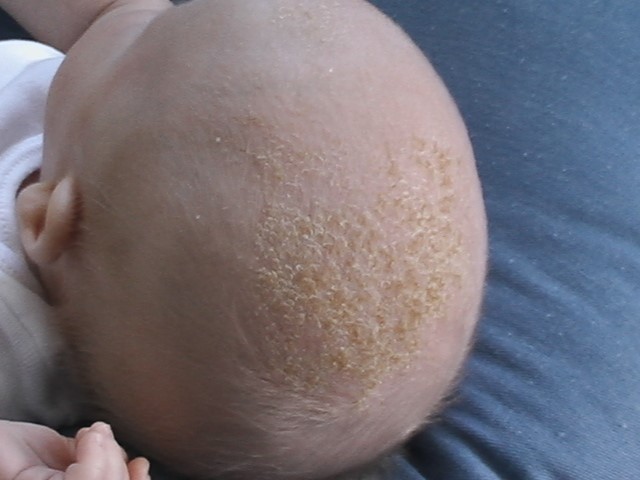 Add to Favourites
Add to Favourites

Scenario Tabs
In this scenario, a parent complains of a rash on their son's head. The student must take a history, make a diagnosis and suggest an appropriate course of action.
Please ensure that this scenario and mark scheme aligns with the most up-to-date guidelines from the UK NICE and the BNF when using it for your OSCE assessment.
You will need a student pharmacist and an actor for this OSCE station.
Cradle Cap
You are a pharmacist working in a community pharmacy. The patient is a 2-month-old boy brought in by his parent. The parent is complaining of a rash on their child's head. You have been asked to take a history, make an appropriate diagnosis and advise the patient on an appropriate management plan.
To do:
Assess the patient's symptoms, develop an appropriate treatment plan, and provide relevant medical or lifestyle advice as needed.
You have 10 minutes.
You have access to the BNF.
The patient:

You are Avery Hudson (Ay-var-ree, Hud-son) - You can be the mother, father or guardian.
Opening statement: ‘My son has a rash on his head. Can you help me figure out what is going on?’
Patient information:
Provide this information when prompted.
Name: Phillip Hudson
Age: 2 months
Medication History:
"None."
Past medical history:
"My baby was born prematurely via Caesarean section due to pre-eclampsia. Other than that, everything else was fine."
Allergies:
Symptoms:
"My baby has patches of white/yellow, greasy scales on red skin, but it’s only on the scalp.”
“I first noticed it last week.
“He’s generally well and playful, with no fever.”
“I don’t think it’s itchy because he’s not scratching or rubbing his head on anything.”
“There’s also no bleeding or leaky fluid."
Treatments:
"I haven’t tried anything to help with it yet."
At this point, the student should inform you that your child has seborrhoeic dermatitis/cradle cap.
The student should mention things you can do at home to help with the symptoms. If they do not, prompt them by asking:
“Is there anything I can do at home to help my son with this?”
“Is there anything I should avoid using on his head while he has this?”



Any criteria marked in red must be met to pass this station.
Referral Criteria for Cradle Cap
Refer to A&E if:
The baby has high fever, redness, swelling, or rapidly spreading patches:
These could indicate a severe infection requiring immediate care.
Refer for an urgent GP appointment if:
The cradle cap doesn’t improve with home treatments: Persistent symptoms might need professional evaluation.
The patches are spreading or worsening: This could signal a secondary infection or other issues needing medical attention.
There are signs of infection, like increased redness, swelling, or oozing: These symptoms suggest an infection that requires treatment.
The baby seems unusually irritable or distressed: Discomfort or distress not explained by visible symptoms may need further investigation.
Wikimedia Commons, 2024.Baby with cradle cap. [online] Available at:https://upload.wikimedia.org/wikipedia/commons/5/50/Baby_With_Cradle_Cap.jpg[Accessed 23 August 2024].
NHS, 2024.Cradle cap. [online] Available at:https://www.nhs.uk/conditions/cradle-cap/[Accessed 22 August 2024].
This website uses cookies to ensure you get the best experience
Learn more
Mary